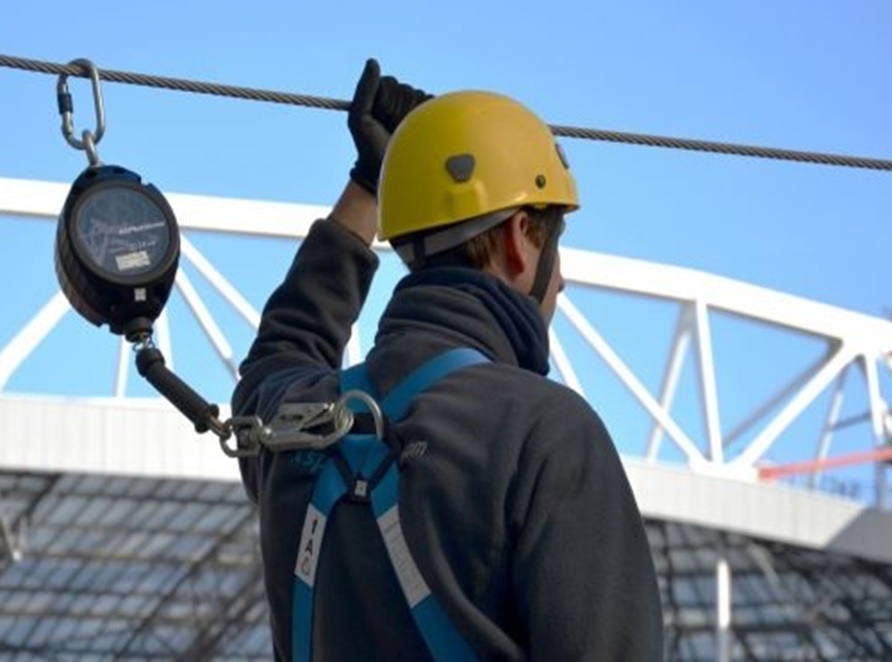Working at heights can be challenging, dangerous and risky. Falling is one of the major causes of severe injuries and fatalities on construction sites and other workplaces that involve heights. As a result, using fall protection tools is crucial when working at heights. But, using the equipment alone isn’t enough to ensure safety. It’s important to use it correctly and follow safety guidelines to minimize the risk of falls that can cause injuries or worse.
This blog will discuss some essential safety tips for working at heights using fall protection equipment.
Tips for Working at Heights Using Fall Protection Equipment
1. Conduct a hazard assessment:
Before starting any job, identify all the possible hazards that may cause falls. Take note of openings, fragile surfaces such as skylights, floor holes, or other potential hazards around the work area. Once you’ve identified the hazards, come up with a plan to mitigate them.
2. Select appropriate fall protection equipment:
Select the appropriate fall protection equipment based on the task at hand. Using the wrong type of equipment can lead to serious injuries. For instance, if you are working at height, ensure you use the right personal protective equipment. It includes safety harnesses, lanyards, self-retracting lifelines, and anchorages.
3. Inspect the equipment:
Before using any fall protection tool, inspect it thoroughly to identify any damage or wear. Look out for frays, cuts, stitching problems, and signs of corrosion. Also, ensure the equipment is up to date with the latest safety standards and regulations.
4. Wear protective gear:
Personal protective equipment (PPE) is an essential component of fall protection. Wear the right PPE such as hard hats, safety goggles, and gloves to protect oneself against injuries caused by falling debris.
5. Properly anchor the equipment:
Anchoring the fall protection tool is crucial, and it must be done using a proper anchor point. Ensure the anchor point meets the OSHA standards and can support the weight of the fall protection system in the event of a fall. Also, make sure that the anchor line is straight and free from any tangles.
6. Stay organized:
Store your fall protection equipment where it’s easily accessible to prevent unnecessary accidents. When the equipment is not in use, store it in a safe, secure place.
7. Inspect equipment regularly:
Regular inspection of fall protection equipment is critical in ensuring that it stays in good condition and operates safely. The frequency of inspections should be included in your Fall Protection Plan.
8. Stay alert:
Working at height can be a dangerous task, but it doesn’t have to be. The key is to stay alert and aware of your surroundings. It means avoiding working at heights when you are tired or feeling unwell, as your judgment may be impaired. In addition, it’s essential to make use of fall protection equipment to keep yourself safe. There are a variety of options available, including harnesses, lanyards, and anchor points. By assessing your surroundings and investing in the right equipment, you can remain alert and stay safe when working at heights.
9. Communicate effectively:
Communication is vital when working at heights, and it’s essential to ensure that there is proper communication among all workers. You can achieve it through hand signals, radios, or other communication tools.
10. Properly use the equipment:
Using the equipment identified for working at heights is crucial; it’s equally important to understand how to use it safely. Incorrect use of fall protection equipment can result in fatal accidents. To reduce the risk of falls, follow the manufacturer’s instructions for using the equipment and attend appropriate training programs.
Conclusion:
Working at heights is often hazardous, but you can minimize the risks by using proper fall protection equipment. Applying the above tips in this blog post can help ensure safe working conditions when exposed to heights, promising that the risk of a fall-related injury or death can be averted. Remember to always inspect, wear appropriate protective gear, maintain close communication, and remain alert to stay safe while performing tasks at height. By following the guidelines for the proper use and maintenance of fall protection tools, employers can build a healthy and safe workplace culture.












